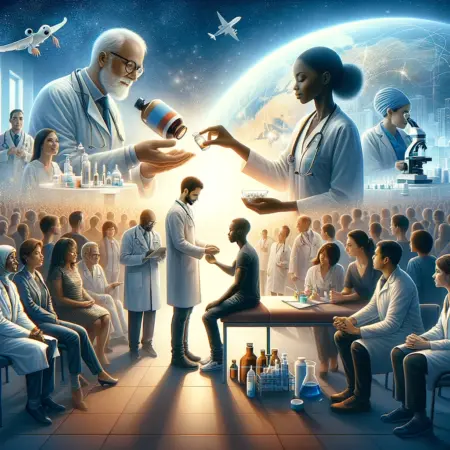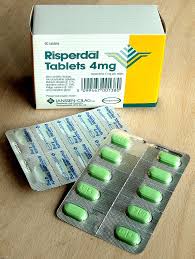Importance of medicine is very important for every human being and in our lives. Medicine is not a science but a learned profession deeply rooted in a number of sciences and charged with the obligation to apply them for man’s benefit. So complex a process could hardly be reduced to a neat symmetrical design and fitted within the covers of a book. Yet this subject, the beneficial uses of medical science, is not without any design at all —it has a conceptual base on which all medical teaching and all medical books should rest. To consider this base, or certain aspects of it, therefore seems proper at the start of a textbook of medicine. Although the article itself is addressed to medical students and graduate physicians of all ages, this Introduction is presented primarily to those now entering the profession.

The Core purpose of medicine is to explore scientific Knowledge
One part of. the conceptual base is set forth in the opening sentence above that ends to apply them for man’s benefit.” Traditionally this applying is made with compassion and in accord with a widely recognized moral and ethical code. Thus the responsibilities of medicine are threefold: to generate scientific knowledge and to teach it to others; to use the knowledge for the health of an individual or a whole community; and to judge the moral and ethical propriety of each medical act that directly affects another human being. These three areas of responsibility command the efforts of individuals from a wide range of scientific disciplines and professions, but the physicians who are involved in the actual applying of the knowledge are of two sorts: those who care for one patient at a time and those who deal with people as groups.
The activities of both sorts of physicians are based on the concept that each disease entity has its own pathogenic chain —the whole series of events that determine its causation and maintenance—and that understanding this chain for a particular disease not only permits clearer recognition of its clinical manifestations, but reveals any weak links that might be exploited for prevention or therapy.
Approach to the body of knowledge organized in this way (both in books and elsewhere) is made from one of two viewpoints. The physician in public health or community medicine is constantly reaching for ways in which pathogenic chains can be broken by some continuing intervention that affects a number of people at once, e.g., to reduce the incidence of goiter by putting iodine in table salt. By contrast, physicians acting within the other system—the clinical system—will search the same knowledge sectors and with educated discrimination will extract those elements appropriate for the solution of a problem in an individual. The viewpoints from which the knowledge is scrutinized are different, but the body of knowledge about each diseases is the same in either.
Medicine And The Role of Physician Always Explore The Importance of Medicine
The Physician who treats one patient at a time and the physician who deals with a community as a whole both exert compassion, but it is of two quite different sorts. The group compassion of the public health or community physician necessarily takes the form of what the writer has previously termed “statistical compassion.” meaning an imaginative compassion for people whom one never gets to see as individuals and, indeed, can know only as data on a graph. This compassion — the deep-seated instinct to try to help those whom one never gets to see —is a characteristic form of motivation for political leaders and other social activists, and “statistical” successes bring them major satisfactions. Such is really not the case with most physicians, who usually do not derive as much satisfaction from seeing improvement on a graph as they do from seeing improvement in an individual. Indeed, part of the self-selection in choosing medicine as a career seems to be a self-image of a person whose professional activities are to relate directly with individuals rather than with groups.
Thus the system of public health or community medicine—based on physicians not seeing patients as individuals — runs contrary to most medical instincts. Yet until we have significant numbers of physicians for whom “statistical compassion” is as rewarding as it is to other types of leaders in our society, we will fail as a society to derive the full measure of the benefits of our medical science.
The Importance of Scientific Basis of Medicine
The scientific basis of medicine had been building up throughout the whole nineteenth century, but the uses of that science in the sense of decisively altering or preventing disease were largely accomplished through the nonclinical or “community” physicians who dealt with people as groups. Chlorination of water supplies and the pasteurization of milk are cases in point It was not until the discovery of insulin 50 years ago. and not really until the advent of the modem antimicrobial era 35 years ago. that the clinical physicians had much in the way of derisive therapies or preventives derived from science. Since that time most of the practical uses of biomedical science and technology have been of nature fitted to the clinical or personal system, and the other system has been allowed to languish. Indeed, the evolution of the highly complex and extraordinarily effective instrument that is today’s medical center has been almost exclusively devoted to the one system —the clinical physician system of one patient at a time.
We could tolerate this so long as what medicine had to offer was technologically simple and physicians were spread out much more evenly than they are now across the whole of society. But the coincidence of massive scientific innovation and wide social change has created a situation in which the application of medical science for man’s benefit can no longer be managed by just one of the two systems —we desperately need both.
Medicine And Role of Community
For there are two critically different populations involved, each of which is the primary responsibility of one of the systems. These two populations are the constituency and the community. The members of the constituency represent a progressively selected group, in part self-selected, and the selection is based on the presence of a medical problem, frequently one that is quite complex. Each member, in effect, has voted to obtain the services of a physician (or center or medical group) and has cast this vote as an individual without reference to others.
The constituency is thus a collection, of individuals who share in common only the fact that each has perceived a self-problem of illness or disease. It is the group known familiarly as the physician’s “practice. The community, by contrast, is made up of people distinguished by the possession in common of some factor not directly related to disease. Usually, but not invariably, this common factor is a domicile located within some geographically defined boundary. In health terms, therefore, the community is a wholly unselected group, and at any one point in time many more of its members are well than are sick. The community and the constituency thus differ strikingly in the prevalence of significant illness and disease. Because of this difference, an institutional form appropriate to meet the needs of one group should be markedly different from the form appropriate for the other.
What the properly sifted members of the constituency need is an institution that can offer a complete array of talents appropriate for the solution of any currently soluble medical problem, no matter how rarely occurring or complicated it might be. What the community needs is recognition of weaknesses in pathogenic chains that may be exploited in the prevention of disease. For non preventable disease the community needs straightforward medical care close to home, safeguarded by continuous mechanisms for identifying those who need care in the first place and mechanisms for sifting the few who need complex care from the many who do not. The actual provision of the care is the responsibility of the clinical or personal physician system in either case. Community medicine (or the larger public health system of which it is a part) is thus responsible not for the delivery of personal health services to the members of a community, but for ensuring that the community receives proper health services of all sort.
The Importance of Medicine In Today’s World
The speedy correction of this imbalance is the critical challenge facing medicine today, and how well we meet it will determine the role of the physician in society. For the imbalance of the two systems affects our efforts for the beneficial uses of science not only at the level of medical care for the community and the constituency, but in those even larger matters that have to do with how the developing individual can be aided in his or her continuous interaction with the environment.
Today There is need to be Done Moral Judgement In Medicine
Moral judgments must be made by the physician engaged in individual patient care, but they are to be made on his own professional acts and those of his colleagues, not on the actions of those who have sought his care. Any moral judgments he might make on his patients’ behavior are private matters to be kept within himself; he must not permit them to influence his own professional acts. This has long been the medical tradition, and it is important that it not be forgotten in the tumult of today’s world of clashing value systems.
The prospect of .moral and ethical problems of an essentially new type is also now emerging before us. There is general awareness that advances in medical science are leading to various ethical conflicts ; that have to be faced by the clinical physician. What is less well recognized, however, is that this situation will become much more widespread and socially serious as advances in biology and medicine, now on the immediate horizon, become more generally applicable through the nonclinical ; system, whether it be called public health or community medicine.
Critical phenomena in human development formerly thought to represent the hand of fate are now found to be, at least in part, environmentally determined, and hence manipulable —such matters as basic intelligence or perhaps the degree of educability. If we develop the power to significantly influence such critical matters — and scientifically we are getting closer to it every day—we may find ourselves faced with seeking to protect the “interests” of an unborn or newborn child to receive a particular intervention against the rights of its own parents to be free from outside interference.
Conclusion
Finally, we must heed a concept of medicine that is ageless. in the life of an individual there ultimately may come a time when all knowledge so carefully presented by the contributions to this article no longer has usefulness, yet life must go on, at least for a time. Whenever this happens, and it happen every day, it is up to each of us to follow to the fullest measure the charge laid down long ago for the physician to become himself the treatment.
